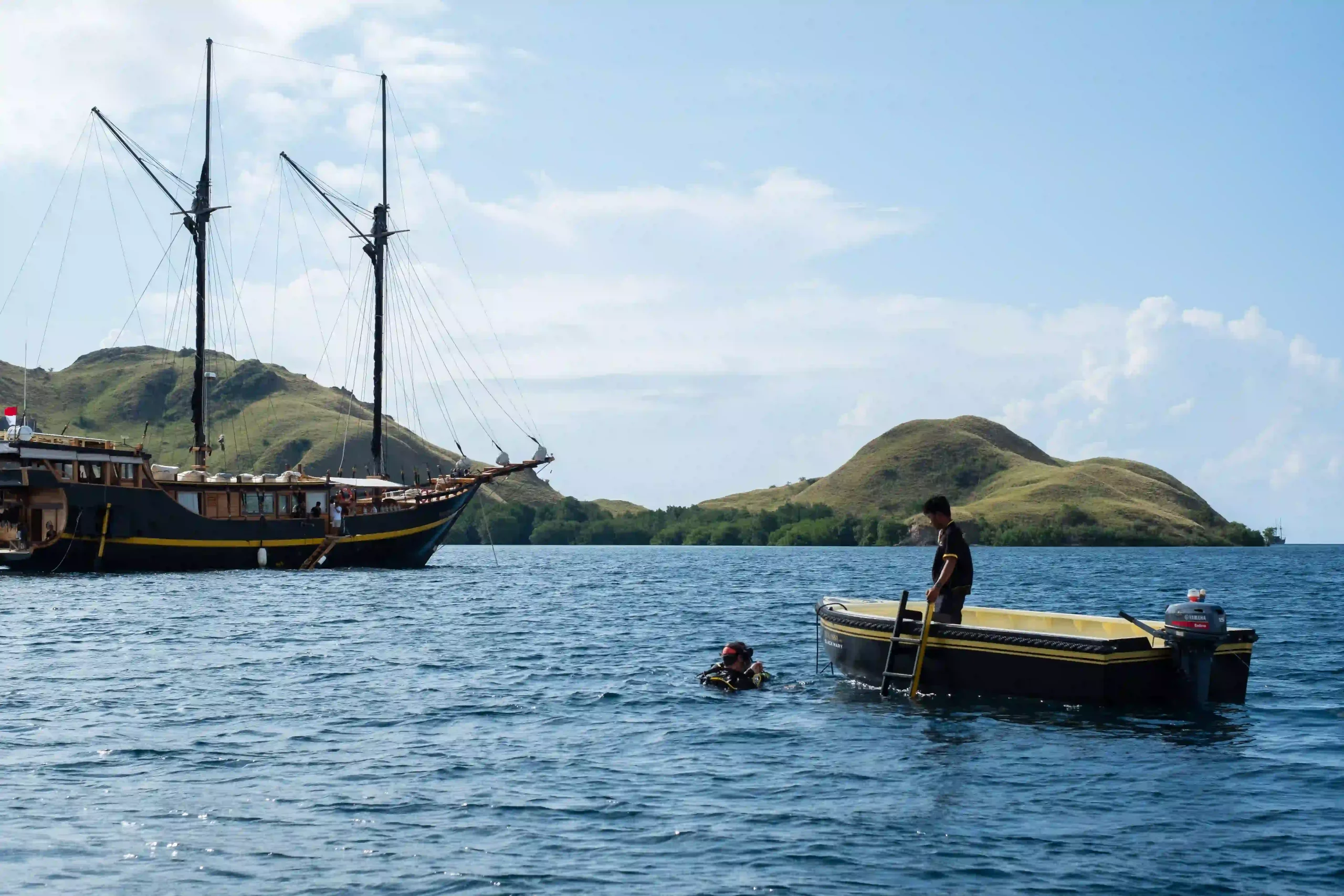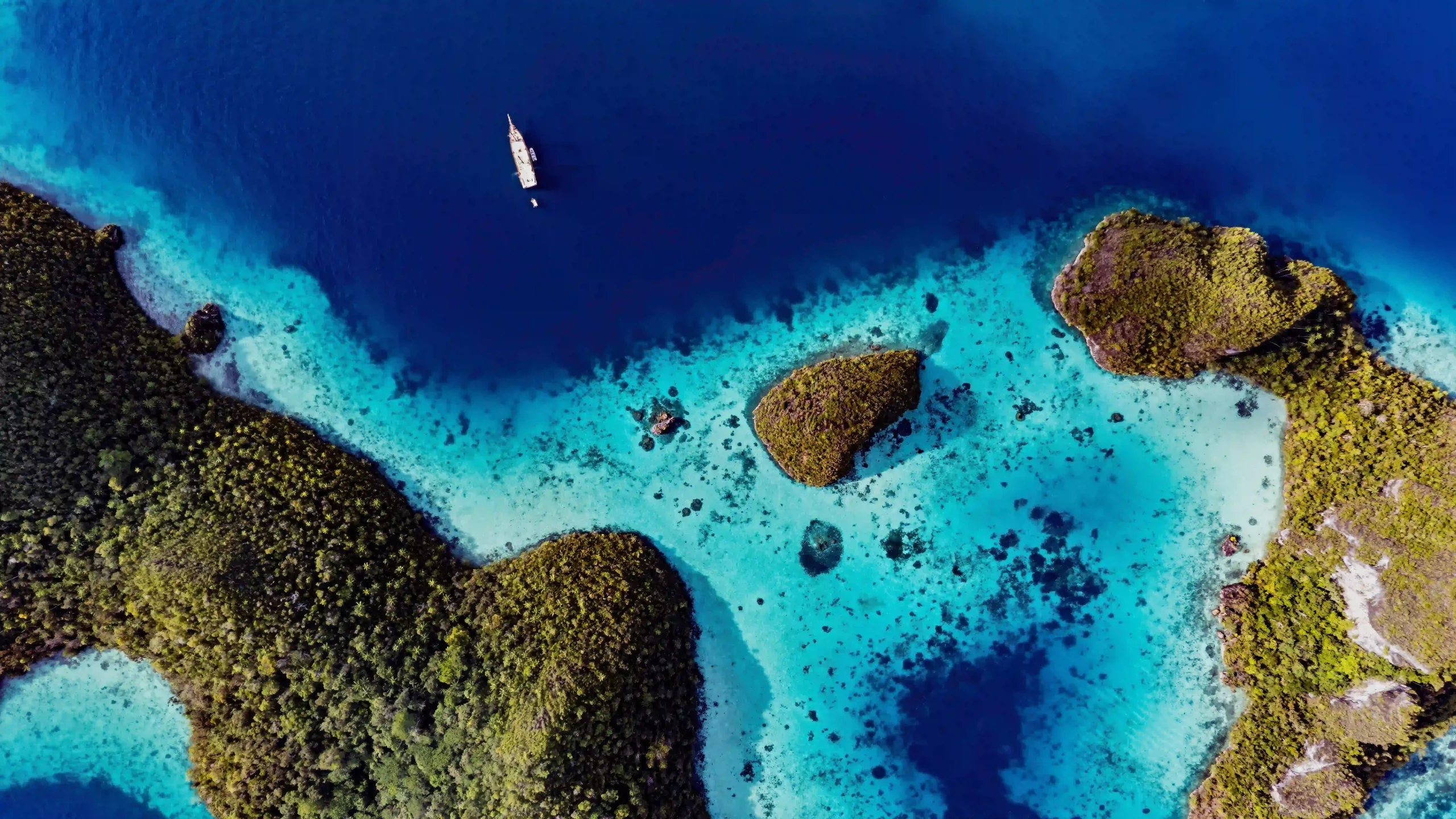YOU'RE READING :
Indonesian Currents, Part 1: How Upwellings Shape Dive Sites
Indonesia, one of the most biodiverse marine regions on the planet, owes much of its incredible marine life to powerful underwater systems like upwellings. These cold, nutrient-rich waters rise from the deep, creating feeding frenzies and marine life hotspots.
In this first part of our Indonesian Currents series, we’ll explore the upwelling phenomenon in Indonesia, how it shapes the region’s dive sites, and why timing, flexibility, and local knowledge are key to diving in these areas.
What Is Upwelling and Why Does It Matter to Divers?
An upwelling current is a process where deep, cold, and nutrient-rich ocean water rises to the surface, typically replacing the warmer surface water that is displaced.
This phenomenon is crucial for marine ecosystems because it brings essential nutrients to the surface, fueling the growth of phytoplankton and supporting the entire marine food web.
The cold upwelling currents not only attract a variety of marine life but also trigger feeding frenzies and create some of the most biodiverse marine environments on Earth.
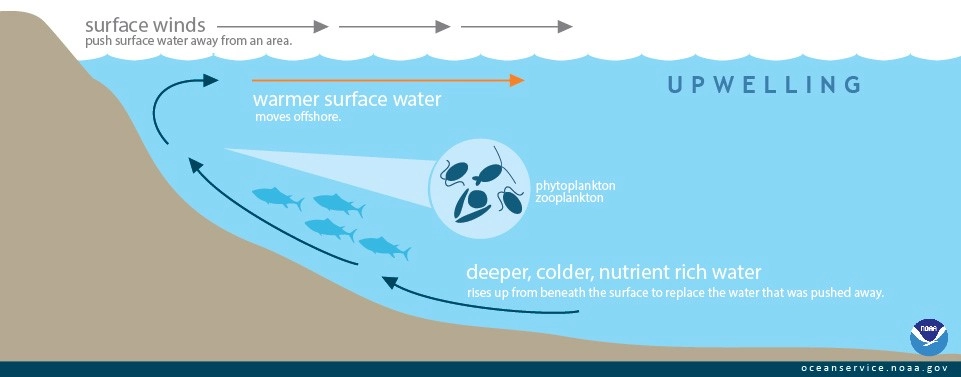
In Indonesia, upwellings are particularly significant in creating dynamic dive sites. These currents often bring cooler waters, which are key to attracting large pelagic species like manta rays, whale sharks, hammerhead sharks, and Mola Mola.
Understanding the nature of these cold currents helps divers select the right dive spots at the best times to witness these awe-inspiring creatures.
Where to Dive Indonesia’s Upwelling Zones
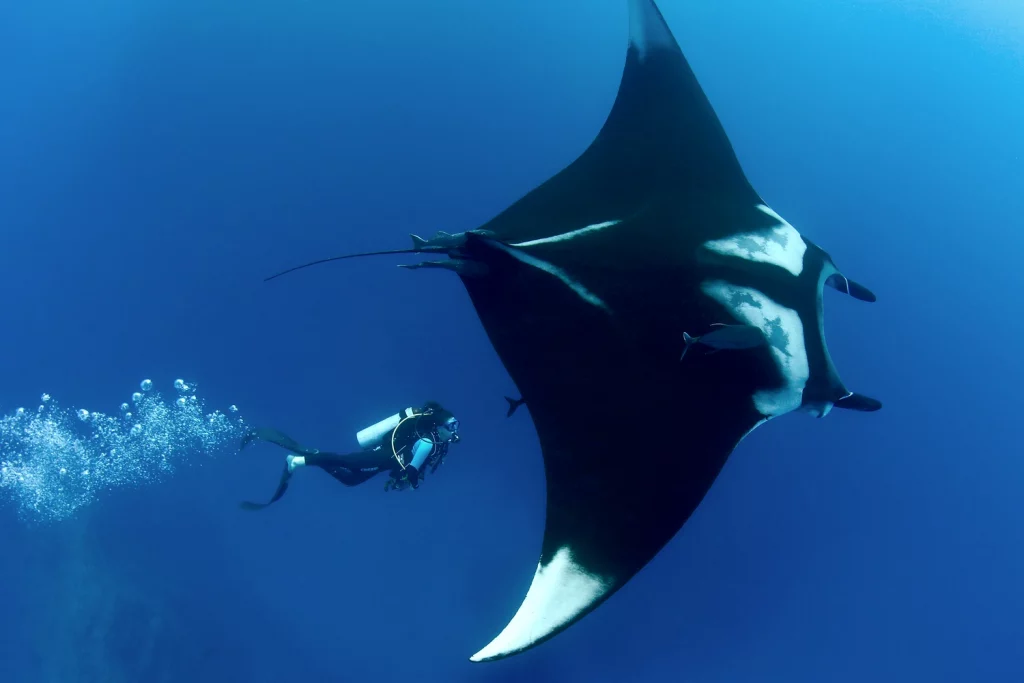
Source: Marine Megafauna Foundation by Dr. Andrea Marshall
Upwelling zones are scattered across Indonesia, and each one offers a unique underwater experience. These nutrient-charged currents shape several of Indonesia’s most exciting dive destinations:
- South Komodo (May–Sept): Peak upwellings around Horseshoe Bay and Nusa Kode bring mantas, reef sharks, and thick fish schools.
- Alor & Pantar Strait (July–Sept): Wild biodiversity and strong currents make this region a drift diver’s dream.
- Banda Sea (Oct–Nov & March): Cold currents here draw hammerheads and pelagics to deep walls and seamounts.
- South Raja Ampat: Remote reefs pulsing with life thanks to regular upwelling activity.
Why Timing Matters and How KLM Thalassa 42 Gets It Right
At Uncharted Cruises, we don’t follow fixed schedules; we follow seasonal science and real-time ocean data. Aboard our private phinisi KLM Thalassa 42, we tailor each expedition around the best seasonal conditions, giving you front-row access to Indonesia’s wildest marine action.
While traditional liveaboards stick to preset routes, our flexible itineraries allow us to adapt to where the action is, whether that means diving with mantas in Komodo or chasing hammerheads in the Banda Sea.
Uncharted Cruises offers a distinct advantage in accessing these sites at the right time. With our private yacht flexibility, we can adjust routes based on seasonal changes and upwelling patterns, ensuring you’re diving at the perfect moment.
Marine Life Drawn to Indonesia’s Upwelling Zones
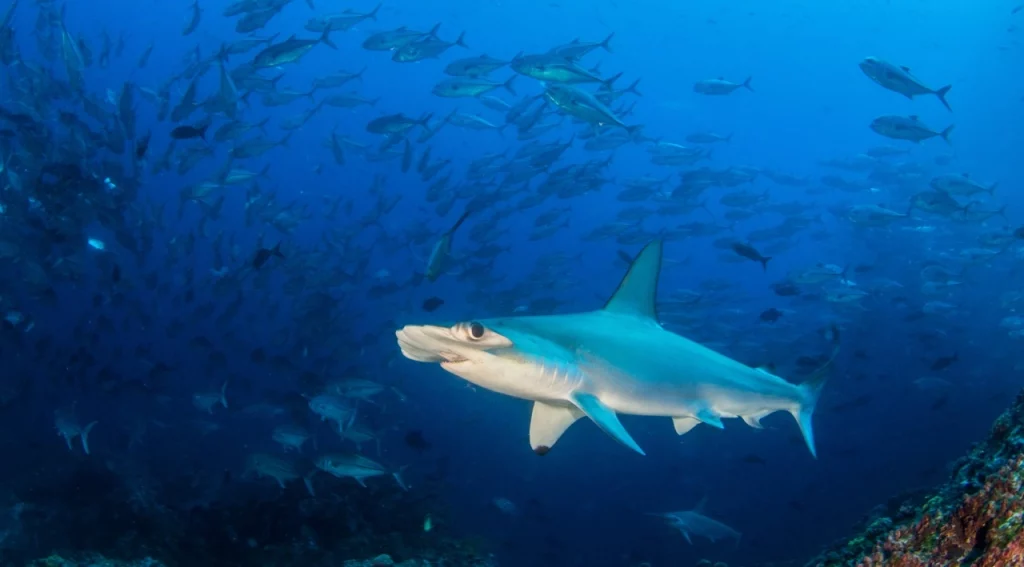
Source: Padi
The cold upwelling currents turn these regions into marine life hotspots. Here, divers can encounter some of the ocean’s most awe-inspiring creatures, including:
- Manta rays and Mobula rays: Upwelling zones provide nutrient-rich waters that attract these majestic creatures, especially around South Komodo and Raja Ampat.
- Whale sharks: Cenderawasih Bay and other upwelling zones offer the rare opportunity to dive with the ocean’s largest fish.
- Hammerhead sharks: These iconic hammerhead sharks are often found in upwelling regions, where cold waters and abundant prey attract them.
- Mola Mola (Ocean Sunfish): Known for their unusual appearance and size, Mola Mola are often spotted in cold upwelling currents, offering a truly unique diving experience. These deep-water giants are drawn to the colder waters brought to the surface by upwelling.
These areas are also home to vast schools of reef fish, and the vibrant coral growth that thrives in upwelling zones makes them ideal for divers who want to explore some of Indonesia’s most biodiverse ecosystems.
Is It Safe to Dive in Currents?
Yes, currents are not only safe to dive with, they're what make Indonesia’s underwater world so extraordinary.
Many of the country’s top dive sites owe their rich marine life to strong currents, especially those driven by nutrient-packed upwellings. These currents attract large pelagics like manta rays, whale sharks, and trevallies, turning every dive into a high-energy spectacle.
The key is knowing how to work with the current, not against it. With the right technique, currents allow you to drift effortlessly through vibrant reefs while witnessing incredible marine activity.
At Uncharted Cruises, safety is our top priority. Our experienced dive guides are highly trained in current diving and will brief, plan, and lead each dive with precision, ensuring your experience is not only thrilling but also controlled and comfortable.
Diving in current-rich waters isn’t something to fear; with expert guidance, it becomes one of the most exhilarating ways to explore Indonesia’s best dive zones.
Dive Indonesia’s Wildest Dive Zones at the Right Time with the Perfect Currents
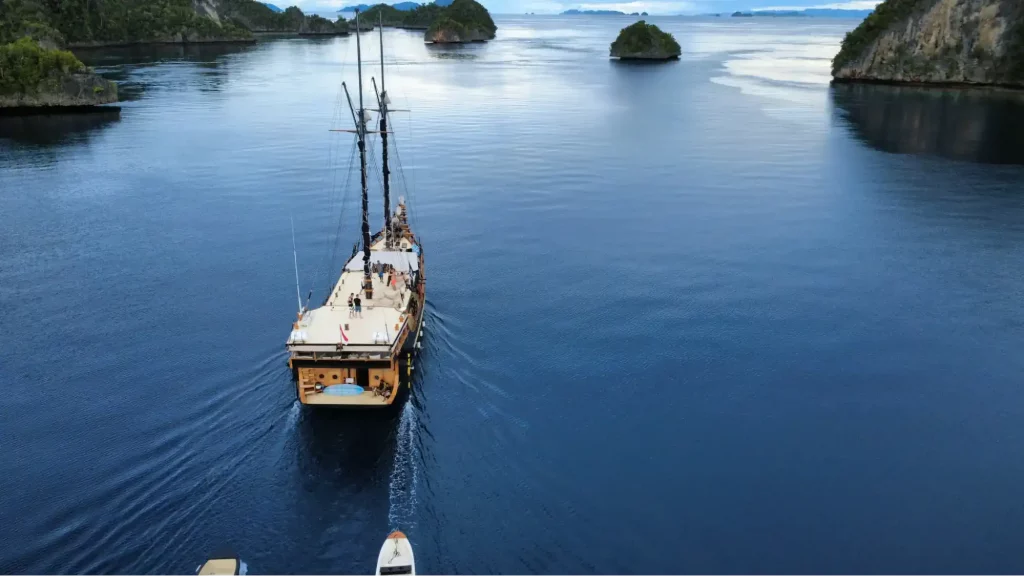
Indonesia’s upwellings are nature’s secret to spectacular diving, but timing is everything. These nutrient-rich currents transform ordinary dive sites into electrifying marine hotspots. To truly experience them, you need more than a fixed itinerary; you need a crew that understands how to move with the ocean.
At our private yacht KLM Thalassa 42 by Uncharted Cruises, we build each expedition aboard our private phinisi, around the pulse of Indonesia’s waters. Our expert team tracks seasonal current patterns, giving you the best chance to dive with pelagics, witness peak marine activity, and explore remote sites few others reach.
Contact us to start designing your custom route and discover why diving with the currents isn’t just exciting, it’s essential.
WHAT'S NEWS?



